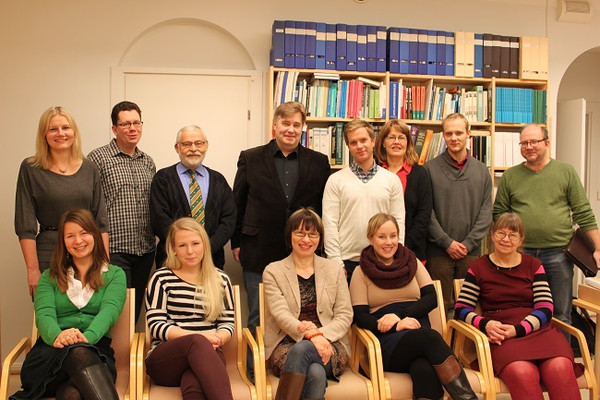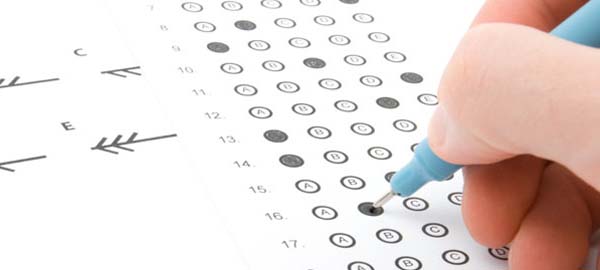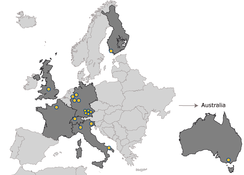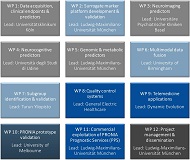Prof. Jarmo HietalaProfessor and Chairman, Department of Psychiatry
|
Tiina From, M.Sc.Senior Researcher Department of Psychiatry |
Markus Heinimaa, Clinical Lecturer, MD, PhD, MScSenior Researcher |
Adj. Prof. Tuula Ilonen, PhDNeuropsychologist |
Päivi Jalo, Registered NurseResearch Coordinator |
Heikki Laurikainen, MDResearcher |
Lauri Tuominen, MD, PhDResearcher |
Adj. Prof. Sinikka Luutonen, MD, PhDClinical Lecturer, Senior Researcher |
Janina Paju, MScPsychologist, Researcher |
Maria Tikka, MscPsychologist, Researcher |
Reetta-Liina Armio (Säilä), MDResearcher |
Anna Toivonen, MScPsychologist, Researcher |
Maija Walta, MDResearcher |

The Department of Psychiatry at the University of Turku has a long tradition in outcome studies of first-episode schizophrenia patients including five follow-up cohorts (Prof. Alanen and Prof. Salokangas)1-5. Prof. Alanen led a large national development project for promoting early intervention for new schizophrenia patients and reducing long-term schizophrenia patients' use of mental hospital beds6. Since 1980s, neuroimaging, including MRI, fMRI, PET (Prof. Hietala)7-9, and since 1990s early detection of psychosis (Prof. Salokangas) have expanded our research field on severe psychiatric disorders such as psychotic and affective disorders10-12.
Cooperation, confirmed by agreements with the Department of Psychiatry, with the Turku University Hospital and Turku City Psychiatry forms an excellent basis for teaching, training and research in psychiatry. Because of population based mental health organization, including community mental health centers (CMHCs), Department of Psychiatry has had good possibilities to recruit for research unselected samples of patients with psychiatric disorders already in an early phase of the disorders. Department of Psychiatry has also a close long-standing collaboration with the Turku Positron Emission Tomography Center. This research line combines clinical methodology with multifaceted neuroimaging possibilities (e.g. sMRI, fMRI, PET, MRI-PET hybrid imaging) (Prof. Hietala) 13-19.
In 1990s, Department of Psychiatry, led by Prof. Salokangas, carried out two projects: The Schizophrenia and Affective Psychoses/SAP project and the Detection of Early Psychosis/DEEP project. Within them, we applied a new neuropsychological method, Rorschach Exner, for differential diagnosing affective and non-affective psychotic and non-psychotic (risk for psychosis) disorders (Dos. Ilonen)20, developed a new instrument, the PROD screen (Dr. Heinimaa) 21, for screening and recruiting patients at risk of psychosis from CMHCs and studied psychiatric disorders and functioning among subjects vulnerable to psychosis (Dr. Svirskis)22-23. Since early 2000s, Department of Psychiatry, led by Prof. Salokangas, participated in the multicenter European Prediction Of Psychosis/EPOS study and created a study organization suitable also for the PRONIA project24-29.
Currently, Department of Psychiatry, University of Turku, participates in two multicentre projects funded by the European Commission: Personalised Prognostic Tools for Early Psychosis Management (PRONIA, PI Professor Raimo K. R. Salokangas) and Integrated Neuroimaging and Metabolic Platform for Characterisation of Early Psychosis and Prediction of Patient Outcomes, PI Professor Jarmo Hietala).
References
1. Alanen YO et al. Towards Need-Specific Treatment of Schizophrenic Psychoses. A Study of the Development and the Results of a Global Psychotherapeutic Approach to Psychoses of the Schizophrenia Group in Turku, Finland. 1986 Springer Berlin Heidelberg
2. Alanen YO. Schizophrenia. Its Origins and Need-Adapted Treatment. Exeter: Karnac Books, 1997.
3. Salokangas RKR. Skitsofreniaan sairastuneiden psykososiaalinen kehitys. (English summary: The psychosocial development of schizophrenic patients.) Kansaneläkelaitoksen julkaisuja AL 7, Turku 1977.
4. Salokangas RKR. Psychosocial prognosis in schizophrenia. Formation of the prognosis for schizophrenic patients: a multivariate analysis. Turun yliopiston julkaisuja Sarja D 9. Turku 1978.
5. Salokangas RKR. Skitsofrenian hoito ja ennuste. Jälkitutkimus psykoterapeuttista yhteisöhoitoa saaneiden skitsofreniapotilaiden psykososiaalisesta ennusteesta (English summary: Treatment and outcome in schizophrenia. A follow-up study of the psychosocial outcome in schizophrenic patients treated in a psychotherapeutic community setting. Kansanterveystieteen julkaisuja M 89. Tampere 1985.
6. Tuori T et al. (1998). The Finnish National Schizophrenia Project 1981-1987: 10-year evaluation of its results. Acta Psychiat Scand 1998;97:10-17.
7. Hietala J et al. Presynaptic dopamine function in striatum of neuroleptic-naive schizophrenic patients. Lancet 1995;346:1130–1131.
8. Hietala J et al. Depressive symptoms and presynaptic dopamine function in neuroleptic-naive schizophrenia. Schizophr Res 199;35:41–50.
9. Huttunen J et al. Striatal Dopamine Synthesis in First-degree Relatives of Patients with Schizophrenia. Biol Psychiatry. 2008;63(1): 114-7.
10. Salokangas RKR et al. Vulnerability to and Current Risk of Psychosis. Description, Experiences and Preliminary Results of the Detection of Early Psychosis or DEEP project. Neurol Psychiat Brain Res 2004;11:37-44.
11. Salokangas RKR et al. Vulnerability to psychosis in patients attending primary care. Results of the RADEP study. Nor J Psychiatry 2005;59:239-245.
12. Salokangas RKR et al. Psychotism and its dimensions in primary care. Associations with patient’s background and manic and depressive symptoms. Results of the RADEP study. Nor J Psychiatry 2006;60:495-500.
13. Hirvonen J et al. Increased Caudate Dopamine D2 Receptor Availability as a Genetic Marker for Schizophrenia. Arch Gen Psychiatry 2005;62(4):371-8.
14. Hirvonen J et al. Brain Dopamine D1 Receptors in Twins Discordant for Schizophrenia. Am J Psychiatry. 2006;163(10):1747-53.
15. Lumme V et al. Cortical dopamine D2/D3 receptors and verbal memory in man. Neuroimage. 2010;51(2):918-22.
16. Delvecchio G et al. Common and Distinct Neural correlates of emotional processing in Bipolar Disorder and Major Depressive Disorder: A voxel-based meta-analysis of functional magnetic resonance imaging studies. European Neuropsychopharmacology. 2012;22(2):100-13.
17. Tuominen L et al. Temperament, character and serotonin activity in the human brain: a positron emission tomography study based on a general population cohort. Psychol Med. 2012 31:1-14.
18. Pepe A et al. Automatic statistical shape analysis of cerebral asymmetry in 3D T1-weighted magnetic resonance images at vertex-level: application to neuroleptic-naive schizophrenia. Magn Reson Imaging. 2013;31(5):676-87
19. Tuominen L et al. Neurotransmitter networks in the human brain. Hum Brain Mapp. 2013 May 14. doi: 10.1002/hbm.22298.
20. Ilonen T et al. Diagnostic efficiency of the Rorschach schizophrenia and depression indices in identifying first-episode schizophrenia and severe depression. Psychiatr Res 1999:87:183-192.
21. Heinimaa M et al. PROD-screen – a screen for prodromal symptoms of psychosis. International Journal of Methods in Psychiatric Research 2003; 12:92-104.
22. Svirskis T et al. Axis-I disorders and vulnerability to psychosis. Schizophr Res 2005;75, 439–46.
23. Svirskis T et al. Quality of life and functioning ability in subjects vulnerable to psychosis. Compr Psychiatr 2006;48:155-160.
24. Ruhrmann S et al. Prediction of psychosis in adolescents and young adults at high risk: results from the prospective European prediction of psychosis study. Arch Gen Psychiatry. 2010;67(3):241-51.
25. Salokangas RKR et al. Perceived negative attitude of others as an early sign of psychosis. Eur Psychiatry 2009;24:233-8.
26. Salokangas RKR et al. Axis I diagnoses and transition to psychosis in clinical high-risk patients EPOS project: prospective follow-up of 245 clinical high-risk outpatients in four countries. Schizophr Res 2012;138,192–7.
27. Salokangas RKR et al. Prediction of psychosis in clinical high-risk patients by the Schizotypal Personality Questionnaire. Results of the EPOS project. Eur Psychiatry 2013 Oct;28(8):469-75. doi: 10.1016/j.eurpsy.2013.01.001. Epub 2013 Feb 8.
28. Salokangas RKR et al. Psychosocial outcome in patients at clinical high risk of psychosis: a prospective follow-up. Soc Psychiatry Psychiatr Epidemiol 2013 Feb;48(2):303-11. doi: 10.1007/s00127-012-0545-2. Epub 2012 Jul 15.
29. Salokangas RK et al. Short-term functional outcome and premorbid adjustment in clinical high-risk patients. Results of the EPOS project. Eur Psychiatry. 2013 Dec 5. doi:pii: S0924-9338(13)00426-4. 10.1016/j.eurpsy.2013.10.003. [Epub ahead of print]












